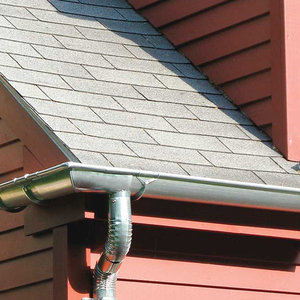I was wondering- I know you glue drywall to wood studs, but what about drywall to 20 gauge metal studs?
I’ve heard of some guys doing this, Is is better? I would think that the oil on the studs would keep it from sticking?
What do you guys think?
-Lou C




















Replies
Call out to ruffmike !
Demoed a fire job recently and the basement had drywall glued to metal studs. All the drywall pulled off the studs with globs of glue on the back. Nothing stayed on the studs. I don't think it had the desired effect:)
Just screw it. But pay attention to reducing sway in the metal studs. Too many guys leave that to the drywall and it won't do. Lay a metal stud on the flat about midway (on your perimeter walls)and screw your layout.
I've seen rock glued with PL type addhesive, but like what was posted, I've demo'd the same and the glue has a high failure rate, it wasn't doing much.
I don't see what is being achieved by doing it anyways, I have never seen properly screwed rock fail on metal studs. We might do it in a tight area that can't be screwed.
If metal studs are being rocked on one side only, they should be reinforced with cold roll steel and kickers, or with a strongback to reduce deflection. All manufacturers will spec this in their literature.
Only time we use PL type glue is on a pony wall, we put gobs of it on the floor and track as we rock. This really stiffens the low walls signifantly
Mike
Trust in God, but row away from the rocks.
Glue the drywall and it will hold the board tight....if....you pay attention to the gluing technique. Read on for details...
I did two years of tenant renovations back in the 80's and the primary wall covering that we used was vinyl covered drywall using hidden clips at the vertical seams and glue on the intermediate studs. There were no fasteners in the field and the glue was the only thing that kept the board from rattling. As part of our tenant renovation services, we often had to remove existing walls and I can say with certainty that the glue bonded the metal to the drywall. Often the stud would be covered with the paper that peeled off from the back of the drywall.
The issue of oil has been raised and it's a valid point. I can't explain why the glue stuck but I know it did. It might have been the choice of glue: we almost always bought cases of the glue from the same source as the commercial vinyl covered drywall and perhaps they sent us a product that they knew would work on the metal studs.
The method of delivery of the glue also has a bearing. Most carpenters deliver a continuous bead of glue that does not meet the minimum bead size. Mike has indicated that they glue their pony walls and he's suggesting that a heavy application works. He right! So, the problem becomes: how can I put the proper size bead on and not break the budget because of the glue?
The solution is actually very simple: use daubs. I used to put a duab of glue every six to eight inches that meet the minimum bead size. When the board was applied, it would squeeze the glue into a round glob that grabbed both surfaces. This gluing technique resulted in a board that was locked onto the stud the same as if it had screws every 6". It worked! We could not take a board down without breaking it into pieces. When board were stripped where the continuous bead was applied, it was common to see long stretches of the thin bead dried and showing no signs of ever contacting the board.
Some may think that the spotting of the glue is too time consuming. Don't worry about that. After a few studs, you'll be able to apply the daubs in machine gun style by just keeping pressure on the trigger and bouncing the glue gun down the stud. It's as fast or faster than continuous gluing.
FYI; the system we used allowed us to use exposed fasteners on the top and bottom of every board. The vertical joints were fastened with clips that were driven into the edge of the board at 24" oc. We also glued each edge of the vertical joint, which required a little more care in applying: if the daubs were too fat, they'd ooze out and have to be cleaned up. With a little practice, I learned to apply the right size beads to each edge of the stud at the vertical joints.
Bob's next test date: 12/10/07